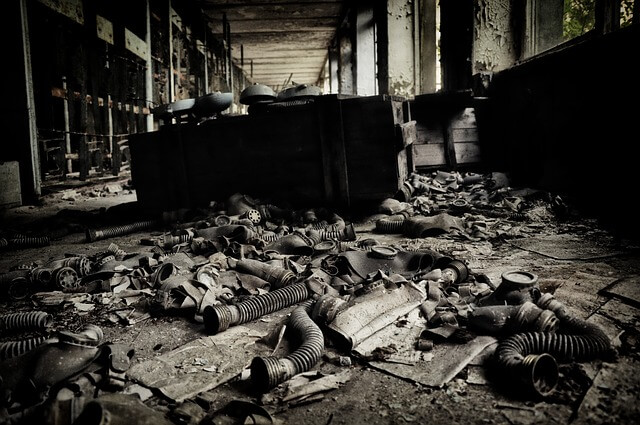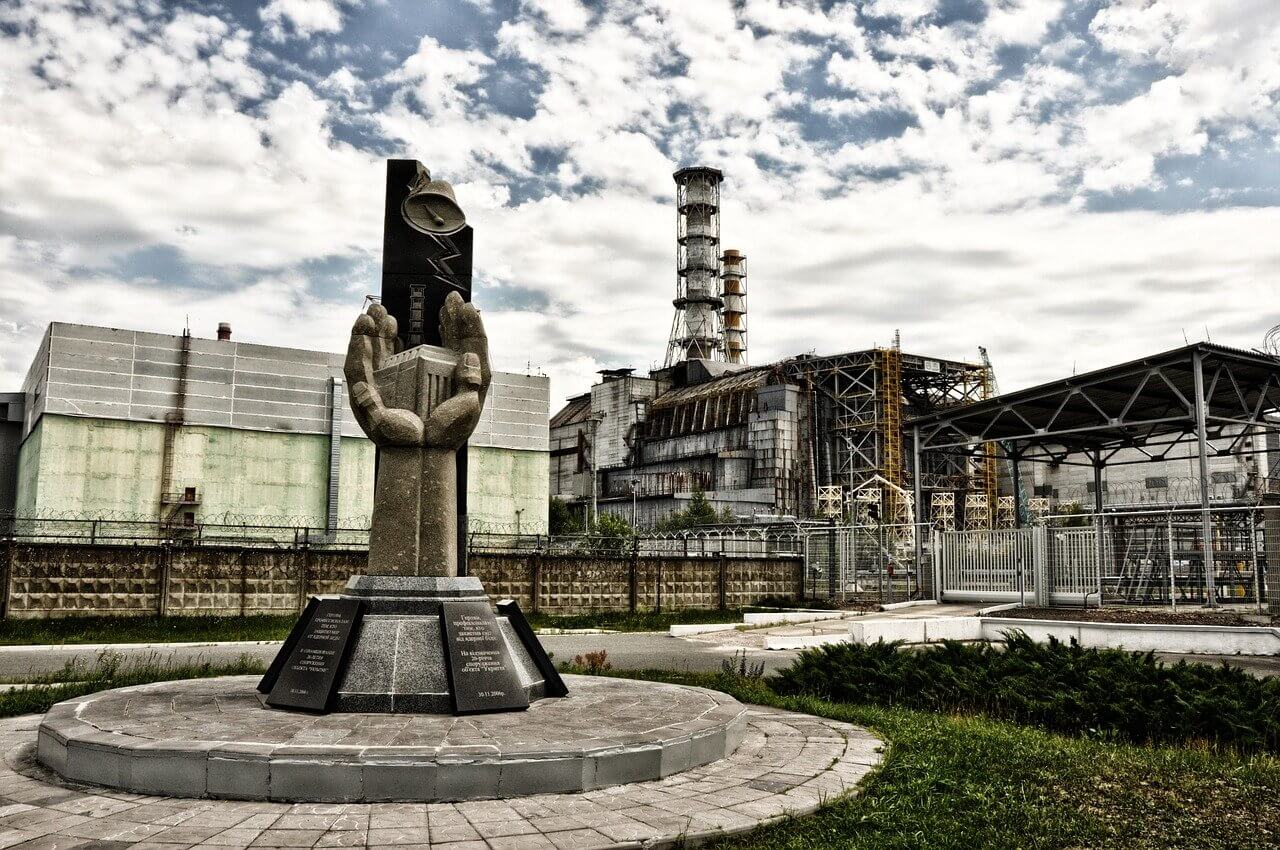Learn about the history of International Chernobyl Disaster Remembrance Day, the timeline of the Chernobyl disaster, its impact, and ways to observe the day. Discover interesting facts about Chernobyl and understand why it’s important to remember the victims and raise awareness about nuclear safety and emergency preparedness.
International Chernobyl Disaster Remembrance Day is observed on April 26th every year to commemorate the nuclear disaster that occurred at the Chernobyl Nuclear Power Plant in Ukraine on April 26, 1986. The disaster, which is considered to be the worst nuclear accident in history, resulted in the deaths of many people and caused long-term environmental damage.
The day is observed to honor the victims of the disaster, including the emergency workers who were exposed to high levels of radiation while responding to the accident. It is also a reminder of the need for continued efforts to address the ongoing effects of the disaster on public health, the environment, and nuclear safety.
The United Nations General Assembly designated April 26th as International Chernobyl Disaster Remembrance Day in 2016, recognizing the importance of raising awareness about the disaster and its long-term impact. The day is marked by various events and activities, including memorial services, conferences, and educational programs.

Source : pixabay.com
History of International Chernobyl Disaster Remembrance Day
International Chernobyl Disaster Remembrance Day was first officially recognized by the United Nations General Assembly in December 2015, through the adoption of resolution A/RES/70/157. The resolution designated April 26th as the annual observance of the day to remember the victims of the Chernobyl disaster and to promote international cooperation and solidarity in addressing the ongoing effects of the accident.
The designation of the day as an international observance was proposed by Ukraine and was supported by many other countries, including Belarus, Russia, and the European Union. The resolution called on member states to promote and support activities related to the remembrance of the Chernobyl disaster and its consequences, as well as to strengthen international cooperation in addressing nuclear safety, emergency preparedness, and the long-term effects of radiation exposure.
The first International Chernobyl Disaster Remembrance Day was observed on April 26, 2016, marking the 30th anniversary of the disaster. Since then, the day has been marked every year with various events and activities, including commemorative ceremonies, educational programs, and advocacy campaigns aimed at raising awareness about the ongoing impact of the disaster on public health, the environment, and nuclear safety.
Chernobyl Disaster Timeline
Here is a timeline of the events that led up to and followed the Chernobyl disaster:
- April 26, 1986: An explosion and fire occur at reactor number four of the Chernobyl Nuclear Power Plant in Ukraine. The disaster releases a massive amount of radioactive material into the environment.
- April 27, 1986: The Soviet government orders the evacuation of the nearby town of Pripyat, which had a population of around 50,000.
- April 28, 1986: The first news reports about the disaster begin to appear in the Western media.
- April 30, 1986: The Soviet government begins a massive cleanup effort, including the construction of a concrete sarcophagus to contain the damaged reactor.
- May 1986: Soviet officials begin to acknowledge the severity of the disaster and the high number of casualties among emergency workers.
- December 1986: The Soviet government announces that the destroyed reactor has been sealed in a concrete sarcophagus.
- 1987-1991: An exclusion zone is established around the Chernobyl site, and residents are forced to abandon their homes and businesses in the area.
- 1991: The Soviet Union collapses, and Ukraine becomes an independent country.
- 1992: The United Nations establishes the Chernobyl Forum to coordinate international efforts to address the long-term effects of the disaster.
- 1996: The Chernobyl plant is shut down, and work begins on a new, safer containment structure.
- 2000s: Ukraine begins to promote the area around Chernobyl as a tourist attraction, despite the ongoing radiation hazards.
- 2016: The United Nations designates April 26th as International Chernobyl Disaster Remembrance Day, to raise awareness about the ongoing impact of the disaster on public health, the environment, and nuclear safety.
Today, the Chernobyl disaster continues to be a reminder of the potential dangers of nuclear power, and efforts are ongoing to address the long-term effects of the accident on the environment and public health.

Source : pixabay.com
Is Chernobyl safe to visit?
The Chernobyl Exclusion Zone, which includes the site of the Chernobyl Nuclear Power Plant, is still highly contaminated with radiation and is not considered safe for long-term habitation. However, the Ukrainian government has opened up parts of the exclusion zone to tourists, with certain safety precautions in place.
Visitors to the exclusion zone must be accompanied by a licensed tour guide, and they are not allowed to touch or remove any objects from the area. Tourists are also advised to wear long-sleeved shirts and pants, as well as closed-toe shoes, to minimize the risk of radiation exposure.
It is important to note that while the risk of acute radiation exposure during a short visit to the exclusion zone is relatively low, there is still a risk of long-term health effects from exposure to even low levels of radiation. Visitors are advised to follow all safety guidelines and to limit their time in the area.
In summary, while parts of the Chernobyl Exclusion Zone are open to tourists, it is not a completely safe place to visit due to the ongoing radiation hazards. Anyone considering a visit to the area should carefully weigh the potential risks and take all necessary safety precautions.
How to Observe International Chernobyl Disaster Remembrance Day
Here are some ways to observe International Chernobyl Disaster Remembrance Day:
- Attend a commemorative event: Many countries around the world hold events on April 26th to commemorate the victims of the Chernobyl disaster and to raise awareness about its ongoing impact. Check with local organizations or government agencies to see if there are any events in your area that you can attend.
- Learn about the disaster: Take some time to educate yourself about the Chernobyl disaster and its aftermath. Read books, watch documentaries, or listen to podcasts to gain a better understanding of the causes and consequences of the accident.
- Donate to organizations working on Chernobyl-related issues: There are many organizations that work to support the victims of the Chernobyl disaster and to mitigate its ongoing effects on public health and the environment. Consider making a donation to one of these organizations on April 26th.
- Advocate for nuclear safety: Use International Chernobyl Disaster Remembrance Day as an opportunity to advocate for nuclear safety and to raise awareness about the importance of preventing similar disasters in the future. Contact your elected officials or participate in online campaigns to support policies and initiatives that promote nuclear safety and emergency preparedness.
- Reflect on the importance of remembrance: Take some time on April 26th to reflect on the importance of remembering the victims of the Chernobyl disaster and the ongoing impact of the accident on public health, the environment, and nuclear safety. Consider lighting a candle or observing a moment of silence to honor the victims and their families.
Interesting Facts About Chernobyl
Here are some interesting facts about Chernobyl:
- The Chernobyl disaster is considered the worst nuclear accident in history in terms of both the human and environmental impact.
- The explosion and fire at reactor number four of the Chernobyl Nuclear Power Plant released an estimated 400 times more radioactive material into the atmosphere than the atomic bomb dropped on Hiroshima.
- The disaster resulted in the evacuation of approximately 120,000 people from the surrounding area.
- The Chernobyl Exclusion Zone, which was established after the disaster, covers an area of approximately 2,600 square kilometers (1,000 square miles) in Ukraine and Belarus.
- The exclusion zone is home to a variety of wildlife, including wolves, lynx, and even some endangered species, due to the absence of human activity.
- The new, safer containment structure built to house the destroyed reactor is the largest moveable structure ever built, weighing in at approximately 36,000 tons.
- Chernobyl was not the only nuclear disaster in the former Soviet Union; another significant accident occurred at the Mayak nuclear complex in 1957, resulting in widespread contamination of the surrounding area.
- Despite the ongoing radiation hazards, the Ukrainian government has opened up parts of the exclusion zone to tourists, with certain safety precautions in place.
- The HBO miniseries “Chernobyl,” released in 2019, was widely praised for its accuracy and attention to detail in depicting the disaster and its aftermath.
- The Chernobyl disaster continues to serve as a cautionary tale about the dangers of nuclear power and the importance of safety regulations and emergency preparedness.
Why International Chernobyl Disaster Remembrance Day is Important

Source : pixabay.com
International Chernobyl Disaster Remembrance Day is important for several reasons:
- It honors the memory of the victims: The disaster at Chernobyl resulted in the deaths of an estimated 4,000 people, and thousands more have suffered from long-term health effects as a result of exposure to radiation. Remembrance Day serves as an opportunity to honor the memory of these individuals and to show support for their families and loved ones.
- It raises awareness about the ongoing impact of the disaster: The Chernobyl disaster had far-reaching environmental and public health consequences that are still being felt today, more than 35 years later. By raising awareness about the ongoing impact of the disaster, Remembrance Day helps to ensure that the lessons of Chernobyl are not forgotten and that efforts to address its aftermath continue.
- It promotes nuclear safety and emergency preparedness: The Chernobyl disaster was caused by a combination of technical failures and human error, and it serves as a powerful reminder of the importance of robust safety regulations and emergency preparedness measures in the nuclear industry. Remembrance Day provides an opportunity to advocate for continued improvements in these areas and to raise awareness about the risks associated with nuclear power.
- It promotes international cooperation: The Chernobyl disaster had global implications, with radioactive materials spreading across Europe and beyond. By observing Remembrance Day, countries around the world can come together to remember the victims of the disaster and to work towards common goals in areas such as nuclear safety and environmental protection.
Overall, International Chernobyl Disaster Remembrance Day is an important reminder of the ongoing impact of the disaster and the need for continued efforts to address its aftermath and prevent similar tragedies from occurring in the future.